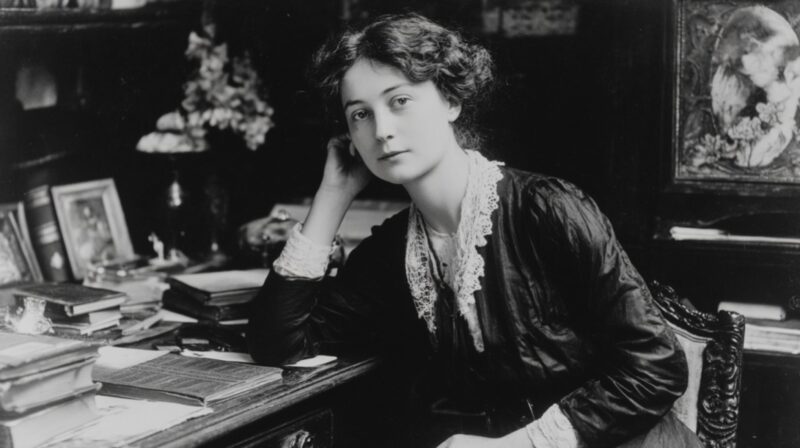First published in 1908, Anne of Green Gables by Lucy Maud Montgomery remains one of the most enduring literary works of the twentieth century.
The story follows Anne Shirley, a spirited orphan with boundless imagination, who arrives at Green Gables expecting rejection but finds love, friendship, and self-discovery.
At its heart, the novel reveals how imagination and resilience help Anne shape her identity, find belonging, and rise above the limitations imposed by society.
Through laughter, mistakes, and perseverance, Anne becomes a symbol of creativity and emotional endurance, inspiring generations to embrace their inner strength.
Context and Creation of the Novel

A review of Montgomery’s background reveals how her personal history shaped both the tone and texture of the novel. Her early years on Prince Edward Island were defined by natural beauty, isolation, and emotional distance.
Losing her mother as an infant and growing up under strict guardians instilled both loneliness and imagination, a duality that echoes through Anne’s character.
Montgomery’s correspondence and journals expose a woman who balanced inner melancholy with outward optimism. Writing became her way to reconcile that contrast, allowing her to express the emotional depth often suppressed in her public life.
- Early loss and emotional neglect fostered empathy for outsiders.
- Rural conservatism in Prince Edward Island provided social tension.
- Writing served as self-healing and rebellion against repression.
- Joyful storytelling balanced against a backdrop of quiet despair.
Through Anne Shirley, Montgomery transformed her own emotional struggles into a character whose optimism and imagination act as tools of resilience.
In contrast, Emily Starr of Emily of New Moon reflects her introspective and shadowed self, demonstrating the author’s dual identity as both dreamer and realist.
Imagination as Survival and Empowerment

A central theme running through the novel is how imagination becomes Anne’s greatest defense and her greatest gift. Rather than treating daydreaming as childish escapism, Montgomery positions it as an act of self-preservation.
Anne’s world-building is strategic, turning hardship into art and rejection into renewal.
- Naming “Lake of Shining Waters” or “White Way of Delight” transforms plain places into havens of wonder.
- Dreaming softens loneliness and offers control in a world that often denies her agency.
- Reinventing herself, wanting to be called “Cordelia”, shows imagination as a tool for self-definition.
- Creative thinking allows Anne to rise above ridicule and isolation.
Montgomery uses Anne’s storytelling to critique a society that undervalues creative minds, suggesting that imagination is not a weakness but a weapon of survival. Her fantasy life becomes a declaration that beauty can be created, even in confinement.
Resilience in the Face of Rejection and Trauma
At its emotional core, Anne of Green Gables is about endurance. When Anne arrives at Green Gables, she is met not with affection but with rejection. Matthew and Marilla Cuthbert had requested a boy to help with farm labor.
Yet, rather than break, Anne adapts, using kindness, intelligence, and humor to win their affection and prove her worth.
Her resilience emerges through a pattern of mistakes and self-growth. She dyes her hair green by accident, quarrels passionately, and commits social blunders, yet she learns through each misstep.
These experiences become her emotional apprenticeship. Instead of resentment, she cultivates empathy and maturity.

- Turning unwanted beginnings into opportunities for love and growth.
- Meeting humiliation with imagination and self-deprecating wit.
- Transforming impulsive behavior into wisdom through reflection.
- Post-war Japan adopted Anne as a symbol of hope, reflecting how universal her endurance became.
Readers find in Anne a figure who teaches that self-worth is built. Her courage to dream under pressure remains one of literature’s most moving depictions of inner strength.
The Transformative Impact of Anne on Others
A strong aspect of Montgomery’s storytelling lies in how Anne transforms not only herself but those around her.
Her arrival in Avonlea acts like sunlight breaking through the clouds of routine. She injects warmth, humor, and emotional intelligence into a community defined by restraint and practicality.
Before Anne, Marilla Cuthbert is pragmatic to a fault, Mrs. Lynde is judgmental, and Matthew is quietly withdrawn.
Through her exuberance and sincerity, Anne humanizes them all. Her imagination becomes contagious, encouraging others to see life with curiosity and kindness.
- Marilla discovers tenderness and love through Anne’s affection.
- Mrs. Lynde learns humility and compassion after misjudging her.
- Matthew experiences newfound purpose in caring for Anne.
- Avonlea becomes more empathetic, creative, and alive.
Her story reminds readers that personal transformation often radiates outward. By helping others rediscover joy, Anne finds her own sense of belonging and identity.
Feminist Undercurrents and Literary Legacy

Though written in the early 1900s, Anne of Green Gables holds unmistakable feminist resonance. Anne defies the expectations placed upon girls of her time. She values education, challenges authority, and dreams beyond domestic life.
Her intellectual ambition, crowned by her winning the Avery Scholarship, symbolizes liberation through learning.
Montgomery subtly crafted a heroine who achieves equality through intellect and individuality, not rebellion. Her independence and determination signal a quiet revolution, especially in a society that restricted women’s voices. Anne’s strength comes not through aggression but through self-belief and integrity.
- Anne pursues knowledge with purpose, not permission.
- Refusal to conform to ideals of passive femininity.
- Compassion and imagination presented as legitimate sources of strength.
- Writing and storytelling serve as acts of self-liberation.
Montgomery’s own life mirrors her protagonist’s defiance. She battled gender barriers and emotional isolation, yet built a lasting literary legacy that continues to inspire. Through her writing, she proved that emotional honesty and creativity could carry as much force as social protest.
Final Thoughts
Anne Shirley endures as a timeless figure of imagination and resilience.
Her life at Green Gables demonstrates how creativity can transform loneliness into belonging and adversity into purpose. By facing hardship with humor and grace, she reveals the redemptive power of hope and imagination.
Readers continue to find inspiration in her story, recognizing that even those overlooked by society possess the strength to reshape their world through courage, compassion, and a boundless inner light.
Read More: A Southern Story of Heritage and Morals: The Little Colonel by Annie Fellows Johnston

